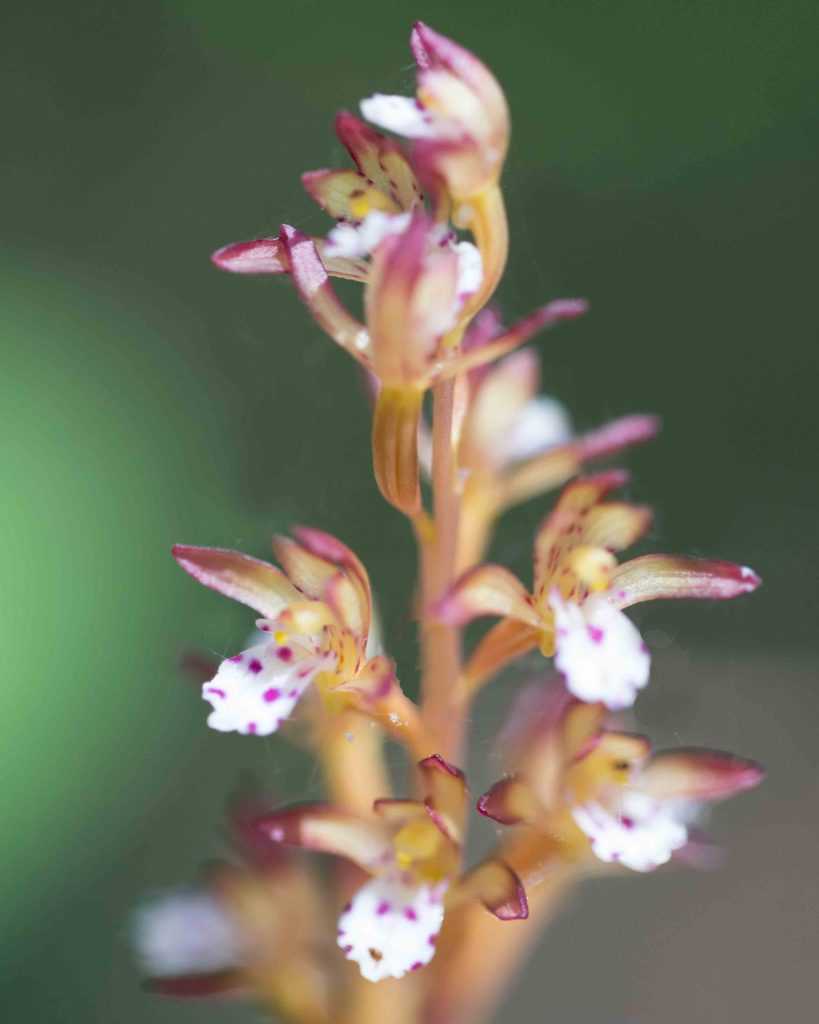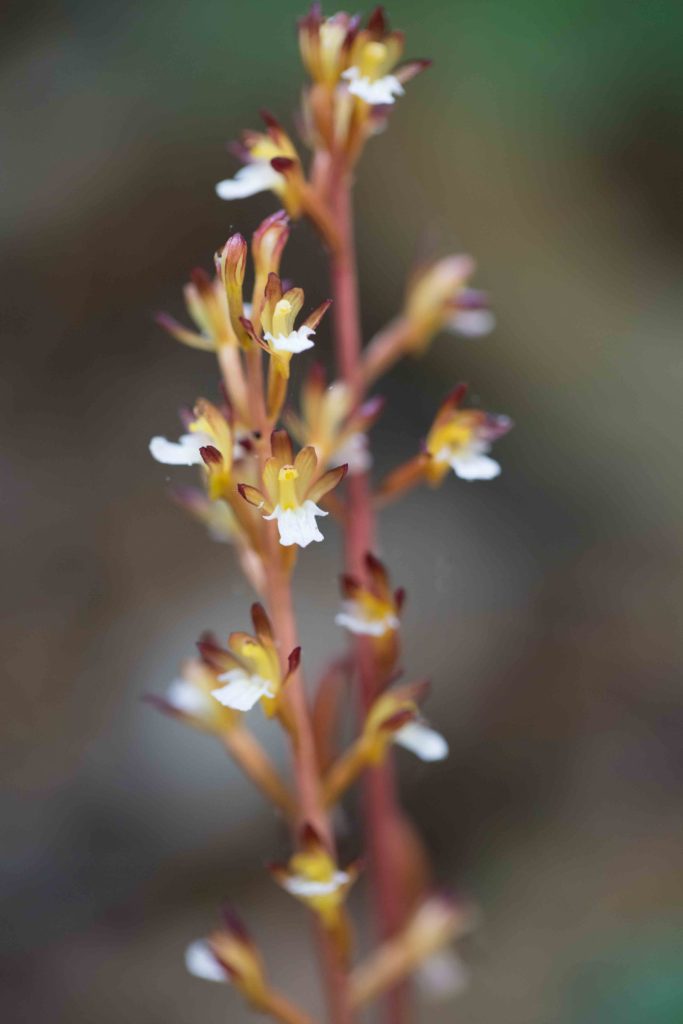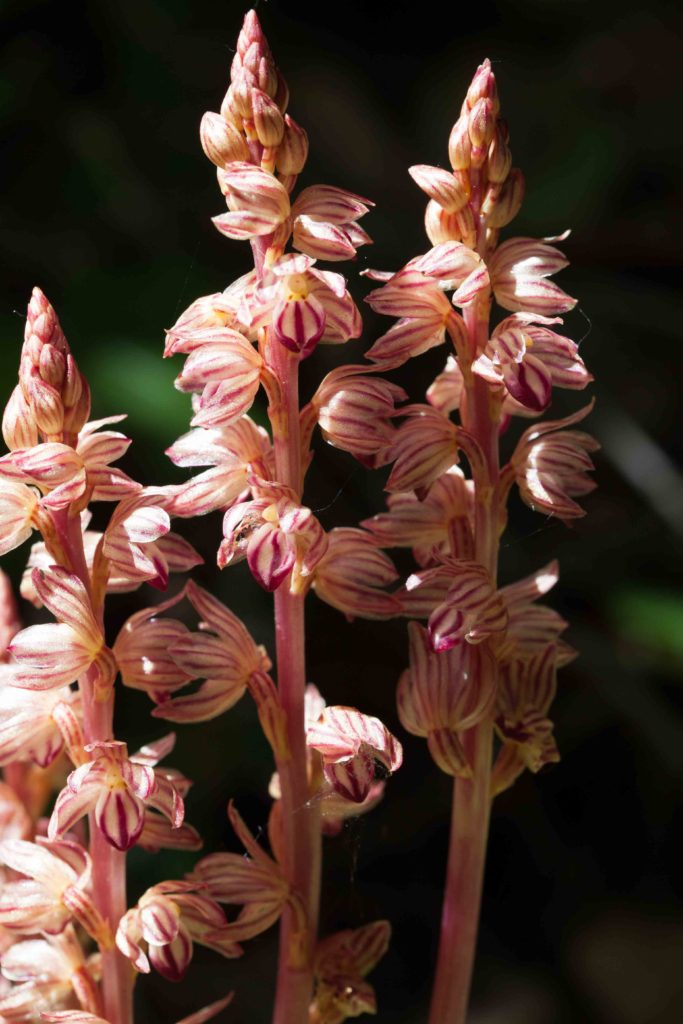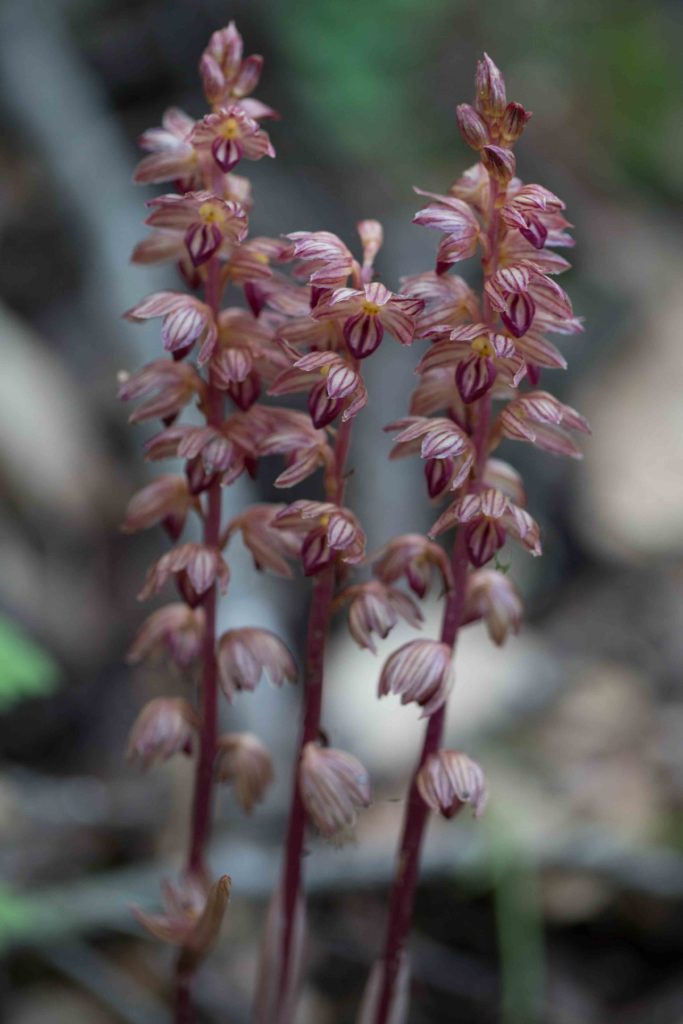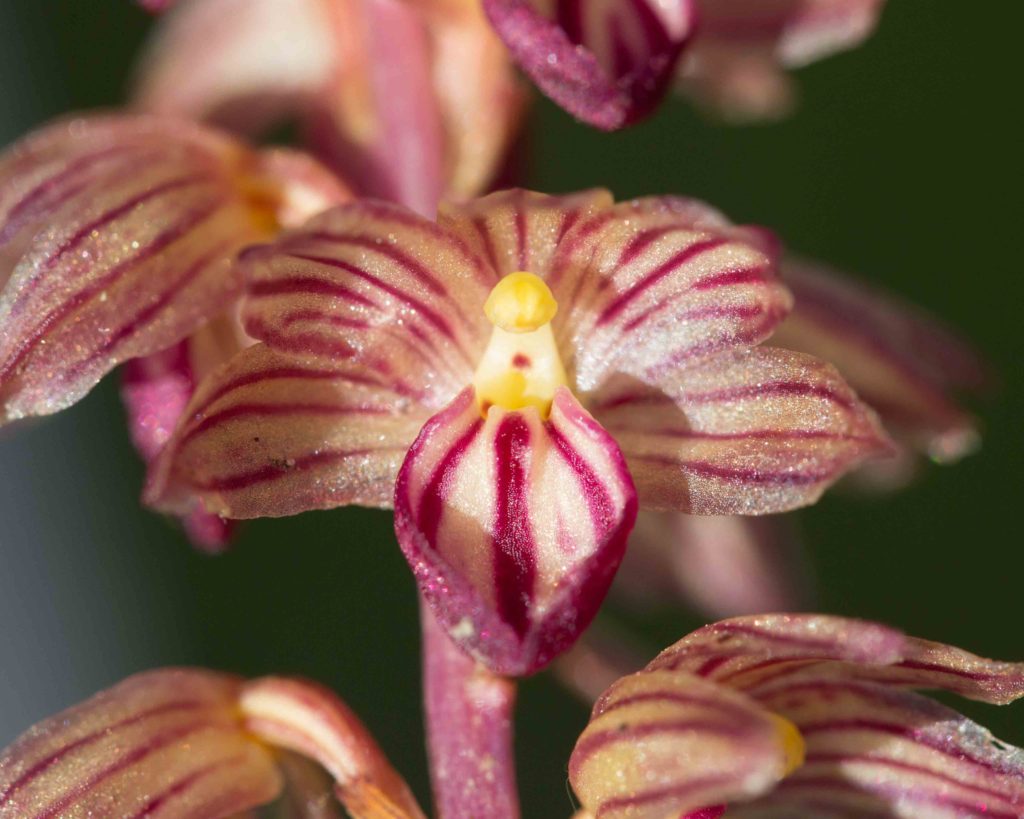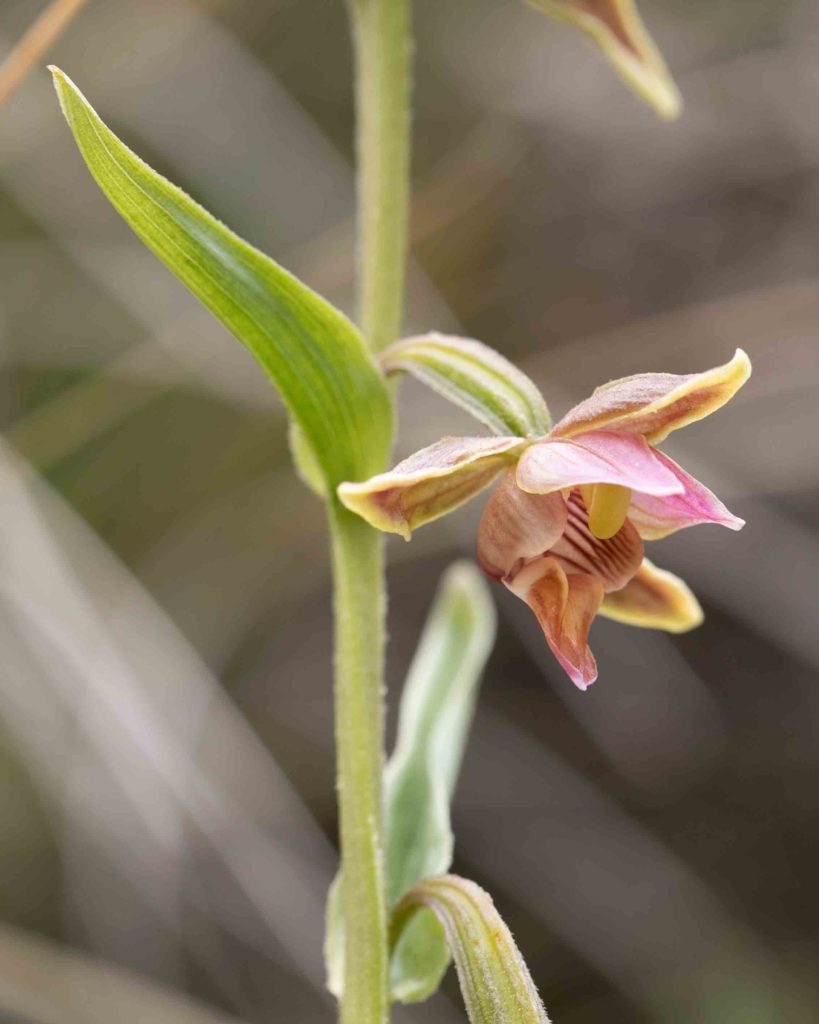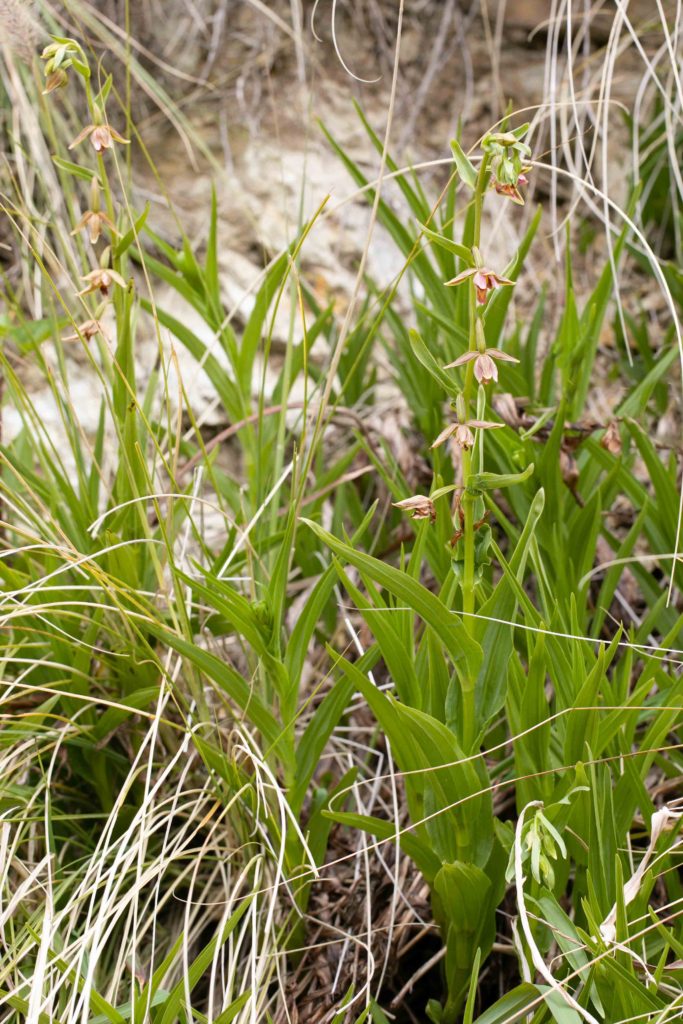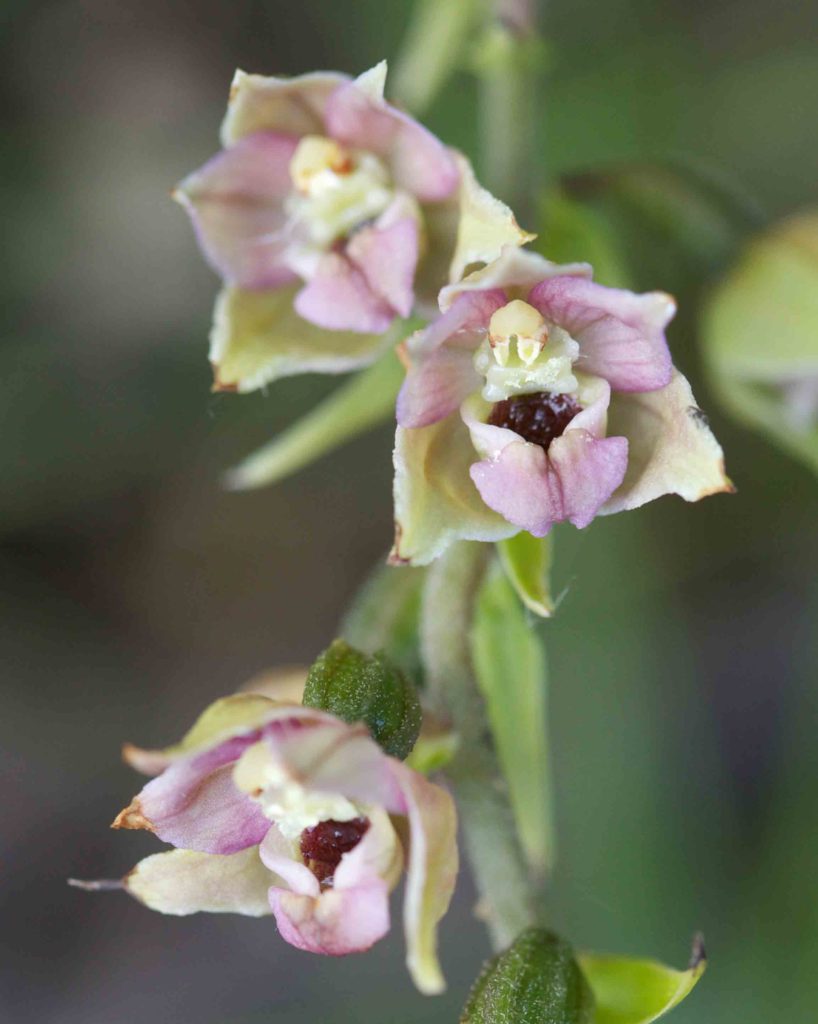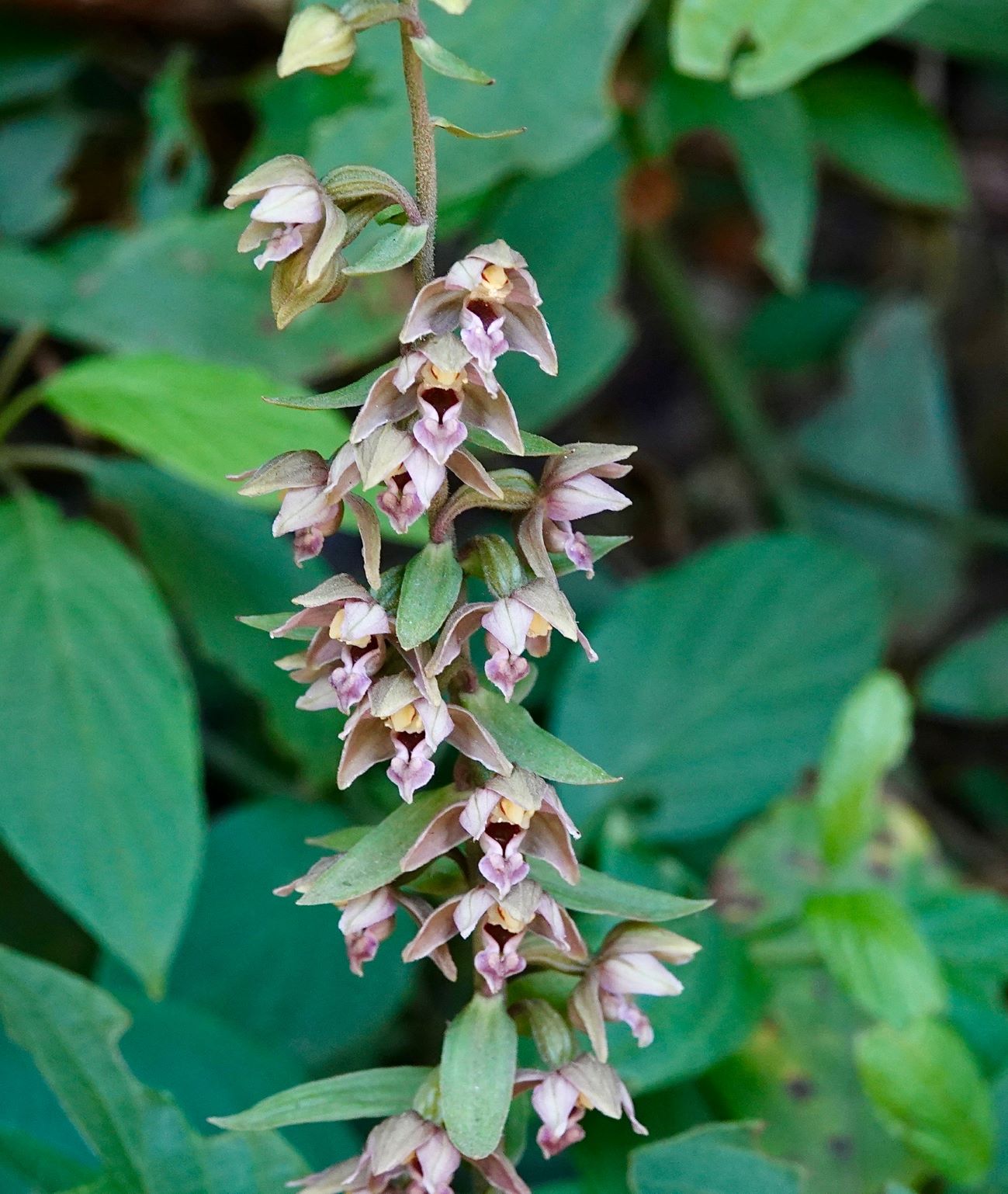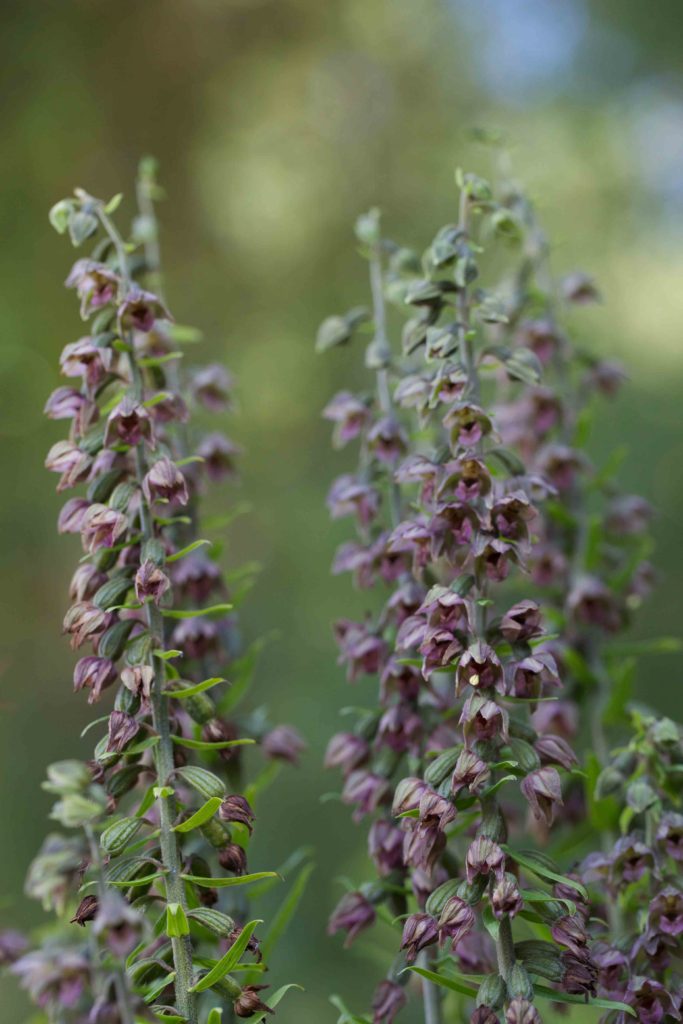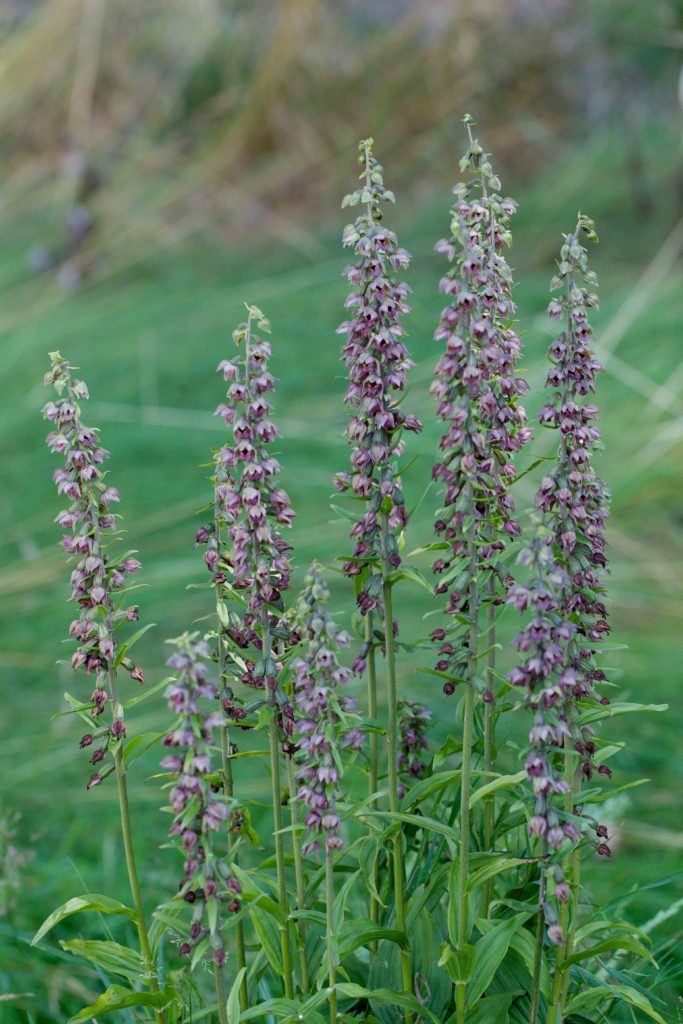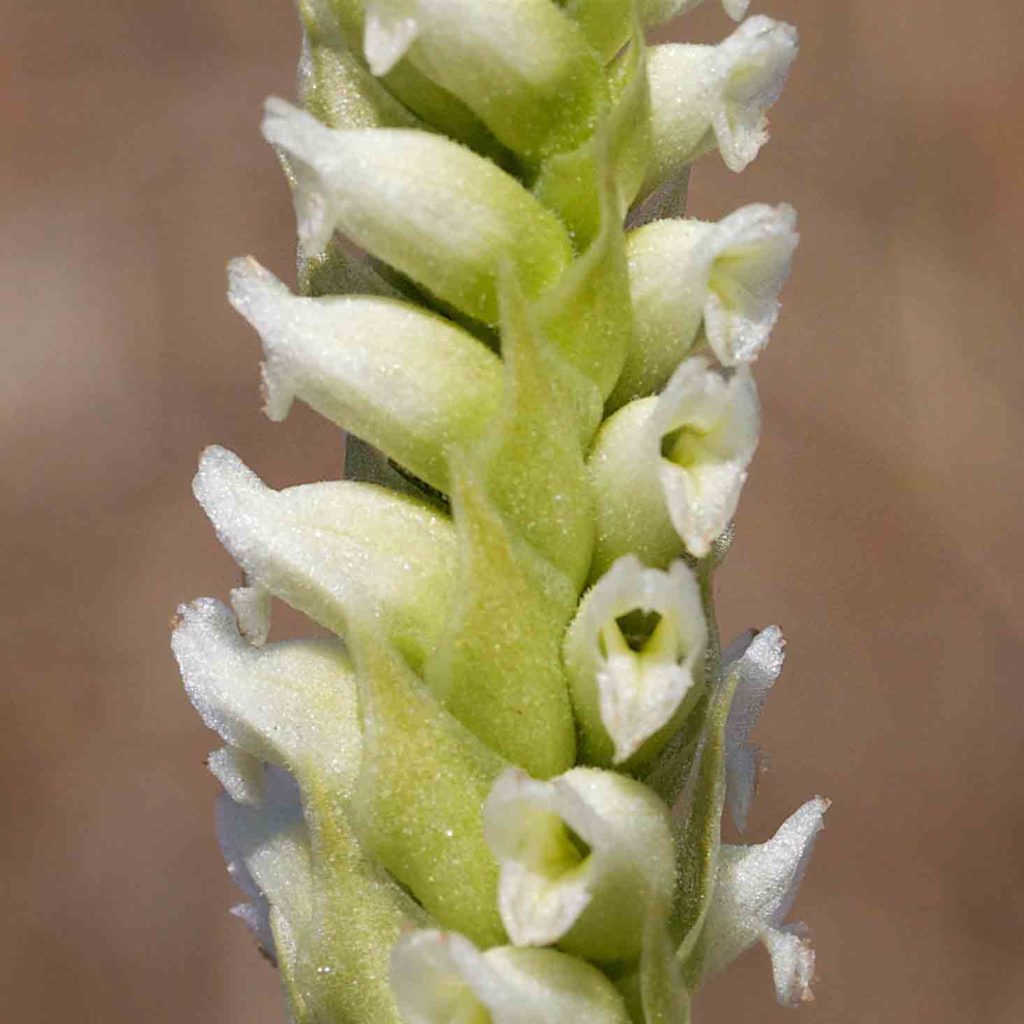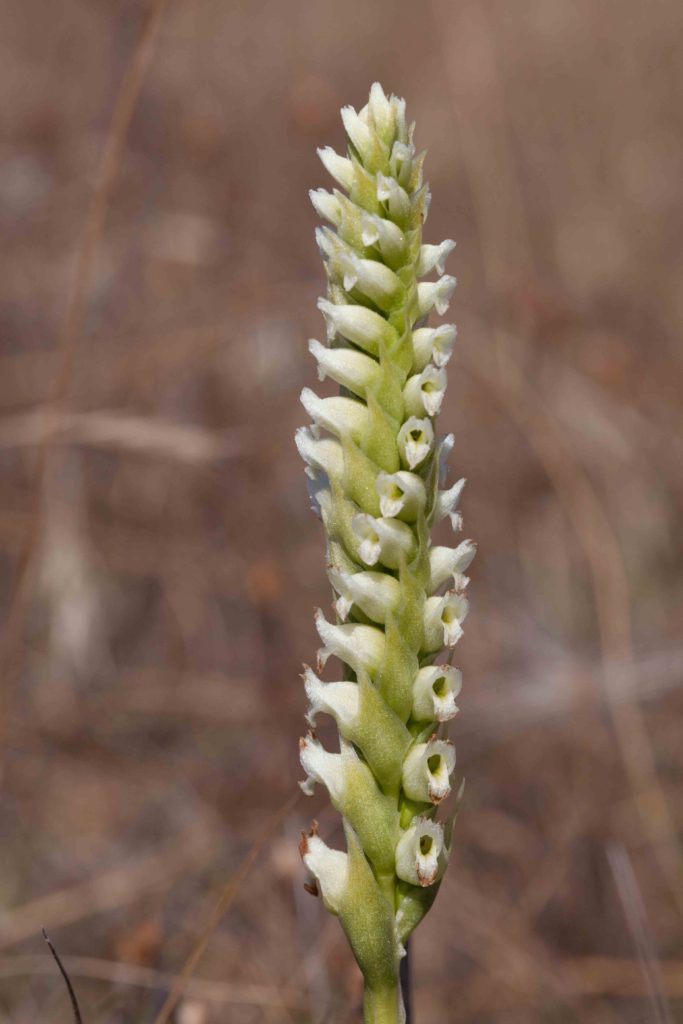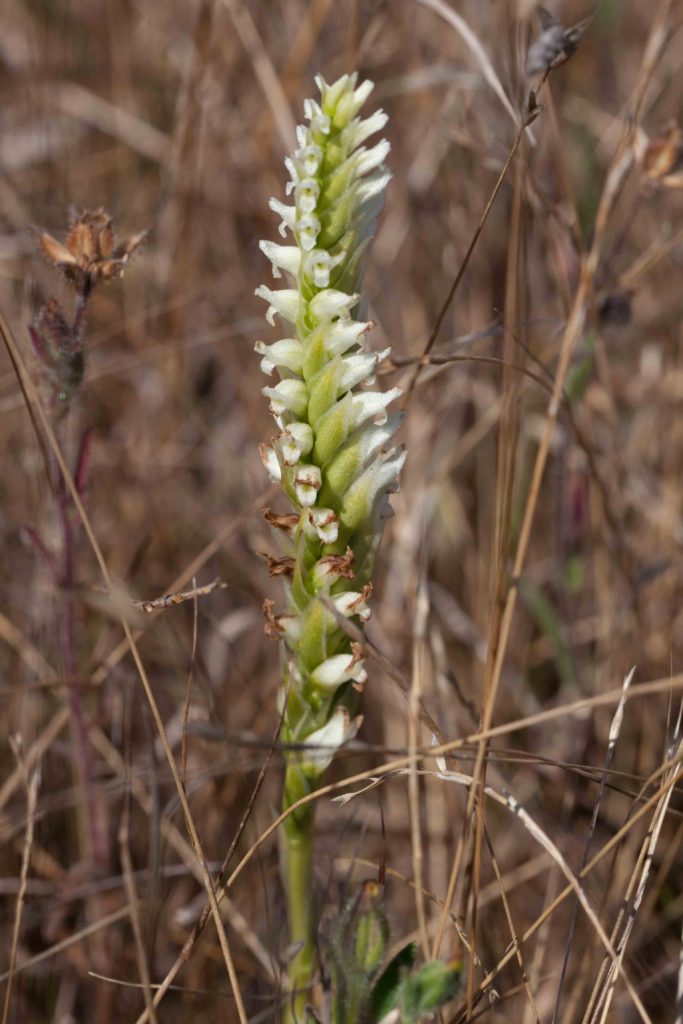Orchidaceae: Orchid Family — Orchids other than Rein-orchids
Orchids are perennials, with over 25,000 species worldwide. All Monterey county orchids grow in the soil, rather than on trees. Flowers are irregular, with the lowest petal being different from the other two petals. There are commonly 3 sepals, all the same, which resemble petals. Many orchids have a symbiotic relationship with soil fungus, which explains the absence of green leaves in those species.
There are three groups of (mostly native) orchids found in Monterey County. 1) those without obvious leaves, such as Corallorhiza (Coralroot); 2) those with leaves and spurs on the flowers, such as Piperia (Rein-orchid); 3) those with leaves but without floral spurs, such as Epipactis (Helleborine / Stream Orchid).
Spotted Coralroot – Corallorhiza maculata var. maculata
Blooms:
May–Aug
Plant Height:
17–55 cm
Flower Size:
Small
Origin:
Native
Habitat:
Shaded woodland in decomposing leaf litter
Notes:
Like Striped Coralroot (Corallorhiza striata, see below), this is more common north of Monterey County. Despite its name, the lower lip of this orchid may be either spotted or pure white. There is another variety (var. occidentalis) that is found only north of San Francisco and which has lower lips that, unlike var. maculata, widen at the tip.
Striped Coralroot – Corallorhiza striata
Blooms:
Feb–July
Plant Height:
15–50 cm
Flower Size:
Medium
Origin:
Native
Habitat:
Shaded woodland, generally coniferous
Notes:
Like Spotted Coralroot (Corallorhiza maculata, see above), this is extremely uncommon in Monterey County. Both derive their sustenance from fungi in its coral-shaped roots with which they have developed a symbiotic relationship. Flowers are pinkish-yellow to pale brown, with longitudinal stripes but without any lateral lobes.
Stream Orchid – Epipactis gigantea
Blooms:
Feb–July
Plant Height:
15–50 cm
Flower Size:
Medium
Origin:
Native
Habitat:
Wet places
Notes:
Relatively uncommon, this has beautiful greenish-yellow flowers, with reddish markings and longish (16–24 mm) lateral sepals. The flowers are rather more striking than those of the other (non-native) Epipactis found in the county.
Left hand photograph reproduced by permission of Barbara Woyt.
Broad-leaved Helleborine – Epipactis helleborine
Blooms:
Apr–Dec
Plant Height:
40–100 cm
Flower Size:
Small
Origin:
Europe
Habitat:
Disturbed places
Notes:
A very common, sometimes weedy orchid. It has lanceolate to ovate leaves, typical of the orchid family. Before blooming, this is easily recognized by the distinctive drooping tip of its stem. Flowers are greenish, often with a pale-purplish tinge, or purple striped and a dark, almost black throat. Photo #2 by CJH.
Hooded Ladies’ Tresses – Spiranthes romanzoffiana
Blooms:
Mar–Sept
Plant Height:
7–30 cm
Flower Size:
Small
Origin:
Native
Habitat:
Wet banks and meadows
Notes:
Unmistakable, with its tall spike of creamy-white flowers arranged in a spiral. Other distinguishing features are the hood formed by the fused upper petals and sepals, and the supposedly violin-shaped lower lip.

